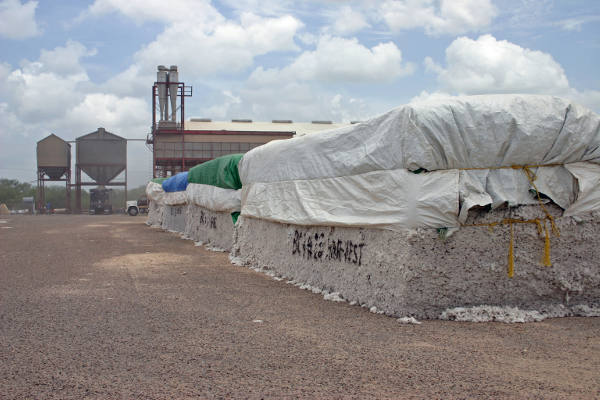March 8, 2012

The weather, market prices and India’s ban on cotton exports are just some of the factors playing on the minds of South Texas cotton growers as they prepare to plant – or not, according to Texas AgriLife Extension Service experts.
“It’s been too wet to plant, but that’s a nice problem to have given the record drought we had last year,” said Brad Cowan, an AgriLife Extension agent in Hidalgo County.
“Then there’s the high winds and rain in the forecast that make for some antsy developments,” he said.
And he’s hearing that some growers are considering planting grain sorghum instead of cotton this year due to healthy market prices for grain.
Add to the mix an upward trend on prices that India’s ban on cotton exports might cause, and the result is a future that’s hard to call, he said.
“It’s going to be very interesting to see how this year turns out for Lower Rio Grande Valley growers,” he said. “Wet fields and high winds are not new challenges, but it’s been a while since we’ve been this far behind in planting cotton.”
South Texas growers normally plant between mid-February and late March, in order to meet the Sept. 1 state-mandated deadline to have all cotton harvested and stalks destroyed to discourage overwintering boll weevils, he said.
Dr. Luis Ribera, an agricultural economist at the Texas AgriLife Research and Extension Center at Weslaco, is predicting a 200,000-acre cotton crop this year.
“Valley growers last year planted 191,000 acres of cotton, according to the U.S. Department of Agriculture,” he said. “Of that, 141,000 acres were planted on dryland fields and 50,000 acres on irrigated land.”
Considering the record drought last year, growers here had a good year with high yields, he said.
India effect
“Prices last year were in the mid-80 cent range per pound,” Ribera said. “For this year, I would expect to have about 200,000 acres with futures prices for July around 91.4 cents.”
But, Ribera said, those prices might rise on news that the Indian government banned cotton exports.
“India is a net exporter of cotton,” he said. “But on March 5 they shut off exports.”
With one less player on the world cotton market, supplies could drop, causing world demand—and prices — to rise.
“What matters is how long that ban will be in effect,” Ribera said. “So far, there’s been no serious impact on cotton futures prices. The market seems to still be waiting. But if the ban stands, Valley growers might be able to benefit from higher world prices.”
Prices currently range between 91 and 92 cents per pound, he said.
Cowan said Valley growers need to see higher prices soon to make the decision to plant more cotton.
“If the market responds immediately to India’s export ban with higher prices, it may not be too late for growers to switch from grain sorghum to cotton, but it will have to happen quickly because there’s a lot of ground to plant at this point,” he said.
In the meantime, healthy prices for grain sorghum are pulling growers that way, Cowan said.
“Local contracts for grain sorghum right now are at about $10 per hundredweight. That’s higher than usual. In fact, it’s pretty darn high considering prices have historically been in the $3.50 to $4 range (per hundredweight).”
But while prices have more than doubled, the cost of growing the crop has also gone up.
“It’s always a challenge to make a profit, but at $10, growers can make money. Of course, they have to make the crop first.”
In the end, the question of what and how much to plant may come down to risk, Cowan said.
“Cotton is an expensive crop to grow, so it might just come down to the risk a grower is willing to take, especially after the really dry season we had last year.”
You May Also Like




